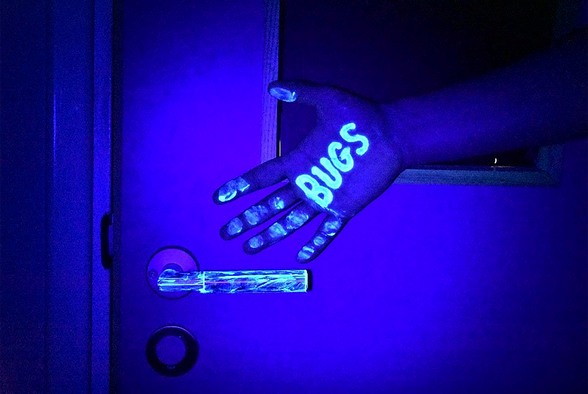Nov 18 2020
Polymers are often used to make personal protective equipment (PPE) such as gowns and face masks. However, not much attention is usually given to the choice of polymers utilized, apart from their physical properties.
 Using fluorescence to demonstrate how particles bind differently to different types of materials. Image Credit: Morgan Alexander.
Using fluorescence to demonstrate how particles bind differently to different types of materials. Image Credit: Morgan Alexander.
Scientists from the University of Nottingham, EMD Millipore, and the Philipps University of Marburg have designed a high-throughput method for examining the interactions between materials and virus-like particles to help determine materials that will attach to a virus and accelerate its inactivation for use in PPE. The method has been reported in the Biointerphases journal, from AIP Publishing.
We’ve been very interested in the fact that polymers can have effects on cells on their surface. We can get polymers, which resist bacteria, for example, without designing any particular clever or smart material with antibiotic in there. You just have to choose the right polymer. This paper extends this thinking to viral binding.
Morgan Alexander, Professor of Biomedical Surfaces, University of Nottingham
The researchers made microarrays of 300 different monomer compositions of polymers that exhibit an extensive range of characteristics. The polymers were exposed to Lassa and Rubella virus-like particles with a similar structure as their viral counterparts but without triggering the infectious genomes—to observe which materials were capable of preferentially adsorbing the particles.
Knowing that different polymers bind and possibly inactivate virus to different degrees means we may be able to make recommendations. Should I use this existing glove material or that glove if I want the virus to bind to it and die and not fly into the air when I take the gloves off?
Morgan Alexander, Professor of Biomedical Surfaces, University of Nottingham
Although this might look like a propitious technique for rapidly screening huge quantities of materials, the interdisciplinary makeup of the team makes it specially positioned to carry out such a study. The surface scientists can make huge numbers of chemicals on microarrays, and the biologists have access to virus-like particles.
To date, only virus-like particles of Lassa and Rubella have been analyzed as part of the tests, but the researchers believe they can obtain a grant to analyze virus-like particles of SARS-CoV-2, the COVID-19 virus.
As soon as some best-performing materials are found, the project’s next step will be to make use of live viruses to assess the viral infectious lifetime on the materials, considering real-world environmental conditions such as temperature and humidity. After obtaining sufficient data, a molecular model can be developed to explain the interactions.
Strong binding and quick denaturing of a virus on a polymer would be great. It remains to be seen whether the effect is significantly large to make a real difference, but we need to look to find out.
Morgan Alexander, Professor of Biomedical Surfaces, University of Nottingham
Journal Reference:
Blok, A. J., et al. (2020) Polymer microarrays rapidly identify competitive adsorbents of virus-like particles. Biointerphases. doi.org/10.1116/6.0000586.